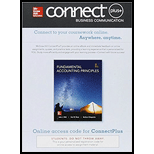
Concept explainers
22-1A Part 1
Note: All the parts of the question are related with each other. Solution of one part is used as a base for solving other Parts of the question. As happen in part 3 and part 4.
Introduction:
Production budget represents the quantities to be produced in the specified period. This budget defined in quantities however one more column can be add to represent amount i.e. at what amount quantities to be produced.
To Determine:
Quantities to be produced in Quarter 3
22-1A Part 2
Introduction:
Direct material is the material to be used in manufacturing finished product. Direct material budget represent the quantities of direct material to be used in manufacturing finished product along with cost of purchasing direct material.
To Determine:
Direct material quantities to be used in producing finished product in Quarter 3
22-1A Part 3
Introduction:
Direct labor budget represent the nos. of labor hours required to produced required nos. of finished product along with total labor cost represented by currency.
To Determine:
Direct labor hours required for producing finished product in Quarter 3 along with labour cost in $.
22-1A Part 4
Introduction:
Factory
To Determine:
Budgeted Factory overheads in Quarter 3
Want to see the full answer?
Check out a sample textbook solution
Chapter 22 Solutions
Connect 2-Semester Access Card for Fundamental Accounting Principles
- Need help with accountingarrow_forwardElmont Industries issues $2,400,000 of 8% bonds at 101. What is the amount of cash Elmont would receive from the sale? A. $2,373,000 B. $2,240,000 C.$2,424,000 D. $2,185,000 E. None of the above. Help mearrow_forwardPlease explain how to solve this financial accounting question with valid financial principles.arrow_forward
- Can you help me solve this general accounting problem with the correct methodology?arrow_forwardI am looking for a step-by-step explanation of this financial accounting problem with correct standards.arrow_forwardTyson manufacturing company produces and sells 120,000 units of a single product. Variable costs total $340,000 and fixed costs total $480,000. If each unit is sold for $12, what markup percentage is the company using?arrow_forward
- A company paid $36,000 for a 3-year insurance policy on January 1, 2024. The payment was recorded as a prepaid expense. What is the adjusting entry required on December 31, 2024?arrow_forwardThe financial statements of the Patterson Industries reported net sales of $875,000 and accounts receivable of $95,000 and $65,000 at the beginning of the year and end of the year, respectively. What is the receivables turnover ratio for Patterson?arrow_forwardI am looking for the correct answer to this general accounting question with appropriate explanations.arrow_forward

 AccountingAccountingISBN:9781337272094Author:WARREN, Carl S., Reeve, James M., Duchac, Jonathan E.Publisher:Cengage Learning,
AccountingAccountingISBN:9781337272094Author:WARREN, Carl S., Reeve, James M., Duchac, Jonathan E.Publisher:Cengage Learning, Accounting Information SystemsAccountingISBN:9781337619202Author:Hall, James A.Publisher:Cengage Learning,
Accounting Information SystemsAccountingISBN:9781337619202Author:Hall, James A.Publisher:Cengage Learning, Horngren's Cost Accounting: A Managerial Emphasis...AccountingISBN:9780134475585Author:Srikant M. Datar, Madhav V. RajanPublisher:PEARSON
Horngren's Cost Accounting: A Managerial Emphasis...AccountingISBN:9780134475585Author:Srikant M. Datar, Madhav V. RajanPublisher:PEARSON Intermediate AccountingAccountingISBN:9781259722660Author:J. David Spiceland, Mark W. Nelson, Wayne M ThomasPublisher:McGraw-Hill Education
Intermediate AccountingAccountingISBN:9781259722660Author:J. David Spiceland, Mark W. Nelson, Wayne M ThomasPublisher:McGraw-Hill Education Financial and Managerial AccountingAccountingISBN:9781259726705Author:John J Wild, Ken W. Shaw, Barbara Chiappetta Fundamental Accounting PrinciplesPublisher:McGraw-Hill Education
Financial and Managerial AccountingAccountingISBN:9781259726705Author:John J Wild, Ken W. Shaw, Barbara Chiappetta Fundamental Accounting PrinciplesPublisher:McGraw-Hill Education





